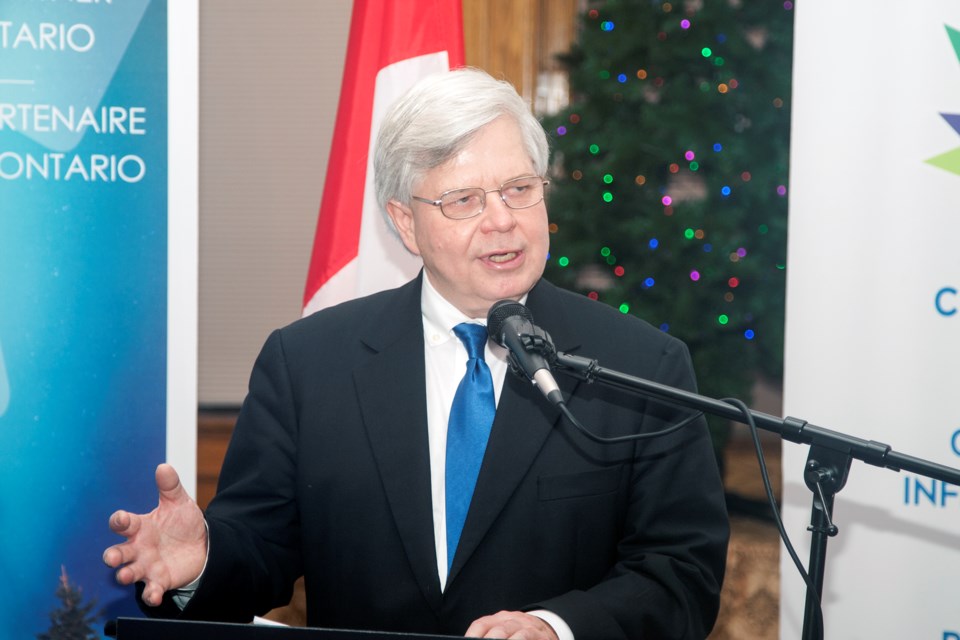The former offices of St. Marys Paper will soon house two new music venues, thanks in part to more than $2.1 million in federal funding announced this morning.
The Algoma Conservatory of Music moved into the historical building in 2014, occupying the bottom two of the three floors in the building.
As a result of today’s funding announcement, the currently-unused third floor will be converted into an entirely new performing venue for the Sault, with modular seating to accommodate audiences of 170 people.
“It’s going to be a very distinctive space, just a wonderful performance area for jazz ensembles, singer-songwriters. Every possible music ensemble will benefit from this space,” said Conservatory president Guy Traficante after today’s announcement.
A new elevator will be added to the structure and an additional smaller performance space will be upgraded on the first floor.
Of the $2.1 million, about $500,000 will be spent on new lighting, sound and seating equipment for the performance spaces.
That new equipment will be stored at the adjacent Machine Shop and in return, will be made available for performances there as well.
Both buildings are part of the ongoing Mill Square project, which also includes proposed future development of the adjacent Pulp Tower, Yard Locker and Board Mill buildings.
“That is going to lower their costs considerably. Right now, to stage a production at the Machine Shop, to bring in the light and sound is roughly a $2,000 cost — which is exorbitant for many presenters,” said Traficante.
He added, “it’s a very generous agreement with (Machine Shop) owner Tony Porco, who very much wants to see it used as a community performance space.”
Traficante is thankful the adjacent buildings were not razed after the closure of the paper mill.
“There were considerable economic arguments that the smart thing to do would have been to demolish everything but this building. We’re very fortunate that was not the direction that was taken,” he said.
The second-floor office of Francis H. Clergue, including a wall-sized 1901 map of North America and original furnishings will continue to be preserved, said Traficante.
He said Clergue spared no expense when building the three-storey structure as his base of operations for his business interests — which included the paper mill, steel production, power generation and a railway network.
“It’s a sound structure that just happens to work perfectly for us. We haven’t had to change any of the room partitioning. They are just the perfect size for our teaching studios,” said Traficante.
The Conservatory brought in consultants from Arup Group, who were involved in projects like the Sydney Opera House, to evaluate the acoustics of the performance spaces.
“They were absolutely stunned by the architecture and superb acoustics,” said Traficante.
He added, “they said when they were here, to build a new venue of this size would have cost over $60-million. Even then, you couldn’t guarantee the acoustics would be as good as it naturally is.”
In 2014, SooToday reported the Conservatory purchased the building for $1 million.
Presented this morning by MP Terry Sheehan, $2 million of the funding will be provided by the Canada Cultural Spaces Fund, with the final $100,000 from the Canada 150 Community Infrastructure Program.
The federal funds will be matched with private funding, which Traficante said will mostly come from donations.
He said the Conservatory is currently in the process of raising funds to complete the project, but the federal funds will get the ball rolling.
Sheehan said the redevelopment of the Mill Square site is imperative to the efforts of revitalizing the city’s downtown.
“This is one of the anchor sites. If we make this development work, it redevelops the entire area and makes it much more attractive,” said Sheehan.
He said the facility may also be useful as a recruitment tool for professionals.
“Attracting doctors, entrepreneurs and business to the Sault, and to keep (them), we need to make sure we have an enhanced cultural community for them,” said Sheehan.
